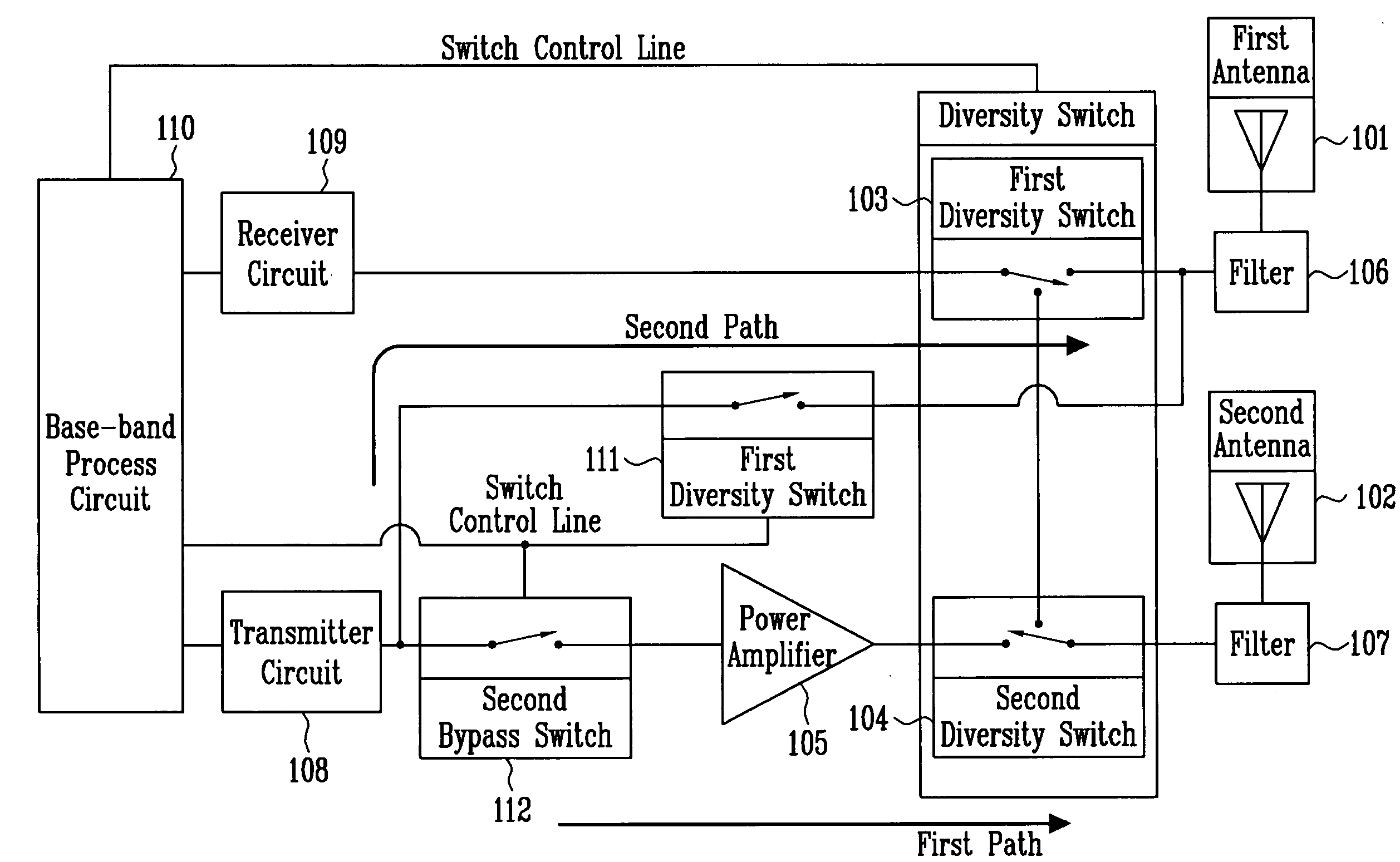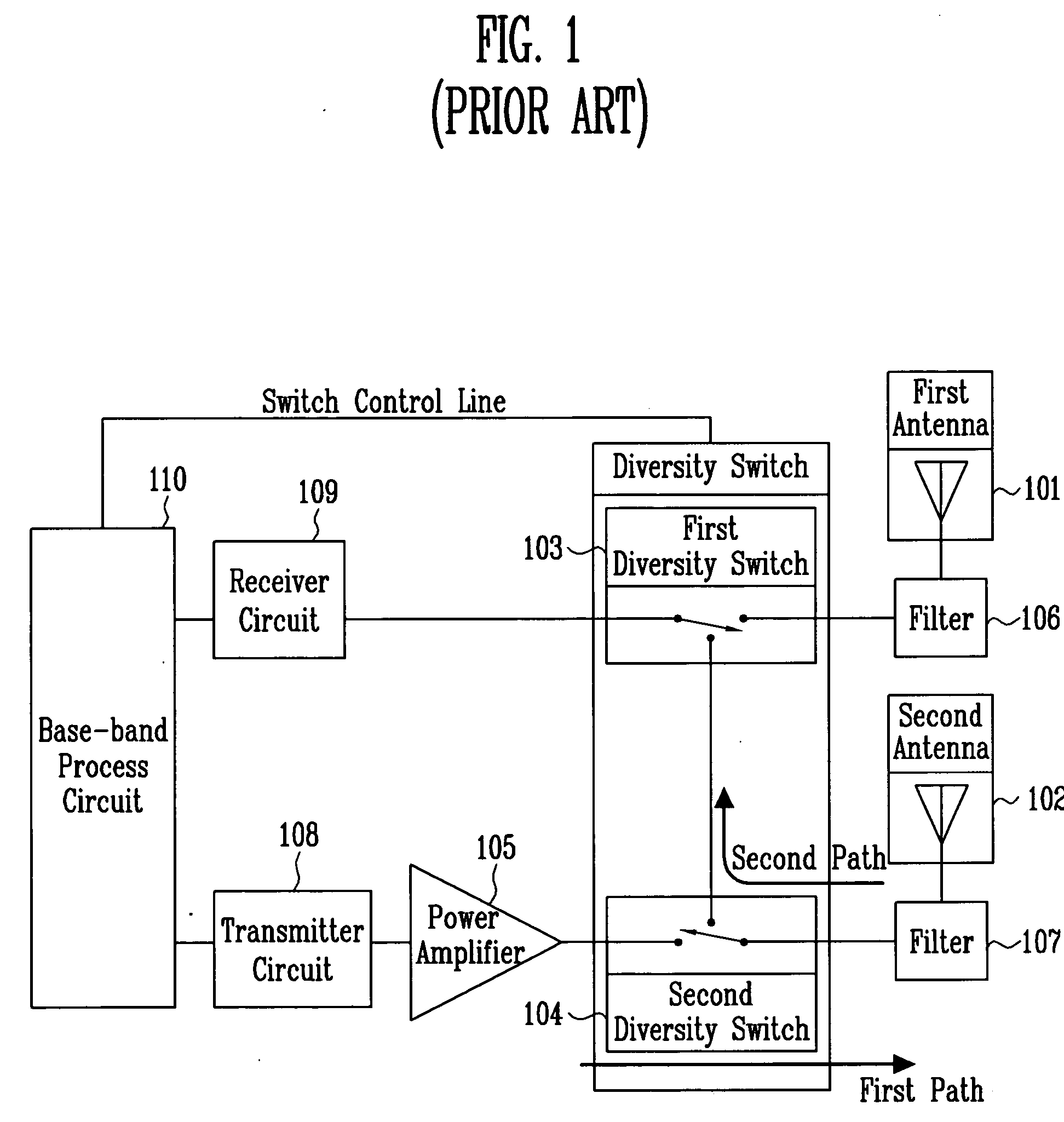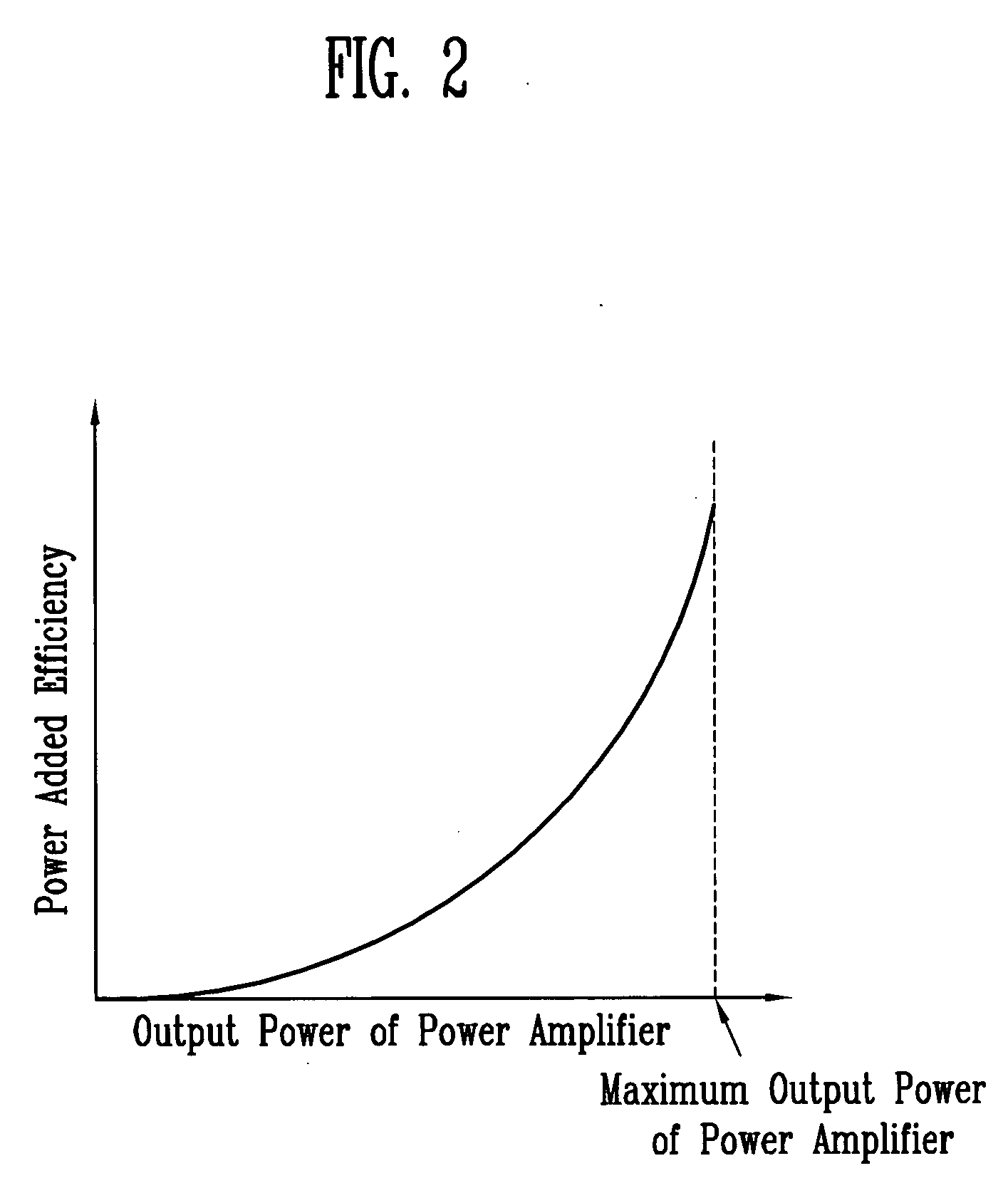Dual antenna diversity transmitter and system with improved power amplifier efficiency
a technology of power amplifier efficiency and transmitter, which is applied in power management, polarisation/directional diversity, and polarisation/wave modulation. it can solve the problems of low power added efficiency, inputted bias current increases with an increase of the output power of the power amplifier, and the remaining range other than the maximum output power range shows extremely low power added efficiency. , the effect of simple configuration
- Summary
- Abstract
- Description
- Claims
- Application Information
AI Technical Summary
Benefits of technology
Problems solved by technology
Method used
Image
Examples
example 1
[0034]FIG. 6 is a block diagram illustrating a configuration of a dual antenna diversity system according to a first embodiment of the present invention.
[0035] The dual antenna diversity system in FIG. 6, with the same manner as the prior art, comprises a first antenna 101 and a second antenna 102 for forming radio signal paths uncorrelated with each other on space or on antenna polarization and having the same antenna characteristics; a first diversity switch 103 and a second diversity switch 104 for switching a signal received by the two antennas; a power amplifier 105 for amplifying a transmitting signal power; a first filter 106 and a second filter 107 for removing an unnecessary signal; a transmitter circuit 108 for processing the transmitting signal, i.e., converting the base-band signal to a radio frequency signal; a receiver circuit 109 for processing a receiving signal, i.e., converting the radio frequency signal to the base-band signal; and a base-band process circuit 110...
example 2
[0039]FIG. 7 is a block diagram illustrating a configuration of a dual antenna diversity system according to a second embodiment of the present invention.
[0040] As shown in FIG. 7, the dual antenna diversity system of the second embodiment of the present invention is different from that of the first embodiment of the present invention in that it further comprises an amplifier 113 within the transmitter circuit 108. In case where the maximum output power of the transmitter circuit 108 is lower than the transmitting output power range where the probability of occurrence is high, the amplifier 113 is intended to make the power amplifier 105 operable with a configuration similar to the first embodiment, by making it possible to output the signal having the transmitting output power in which the probability of occurrence is high, with only the transmitter circuit 108. In this case, the output power of the installed amplifier 113 is significantly lower than that of the power amplifier 10...
example 3
[0041]FIG. 8 is a block diagram illustrating a configuration of a dual antenna diversity system according to a third embodiment of the present invention.
[0042] As shown in FIG. 8, the dual antenna diversity system according to the third embodiment of the present invention adds a power detector 114 in the output of the transmitter circuit 108 to the dual antenna diversity system according to the first embodiment of the present invention. The first bypass switch 111 and the second bypass switch 112 are controlled to be opened or closed, by detecting the output power of the transmitter circuit 108 through the power detector 114 and comparing this with the transmitting output power described in the first embodiment. With this operation, the switch is self-controlled by the power detector 114, contrary to the first embodiment where the first bypass switch 111 and the second bypass switch 112 are controlled by the base-band process circuit 110. Therefore, the efficient operation of the p...
PUM
 Login to View More
Login to View More Abstract
Description
Claims
Application Information
 Login to View More
Login to View More - R&D
- Intellectual Property
- Life Sciences
- Materials
- Tech Scout
- Unparalleled Data Quality
- Higher Quality Content
- 60% Fewer Hallucinations
Browse by: Latest US Patents, China's latest patents, Technical Efficacy Thesaurus, Application Domain, Technology Topic, Popular Technical Reports.
© 2025 PatSnap. All rights reserved.Legal|Privacy policy|Modern Slavery Act Transparency Statement|Sitemap|About US| Contact US: help@patsnap.com



